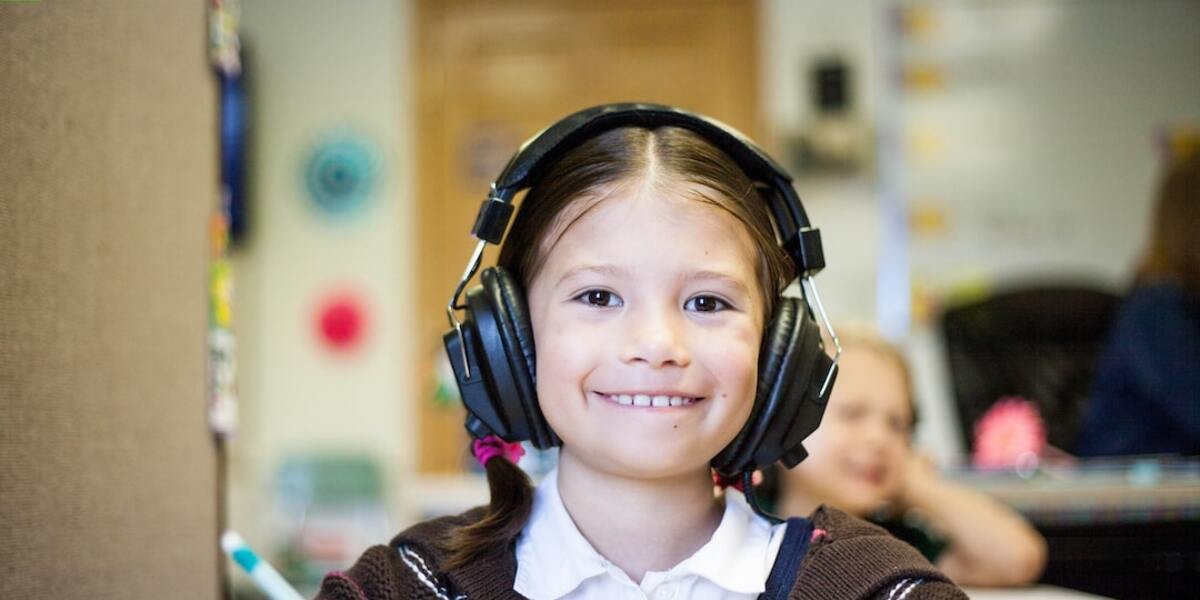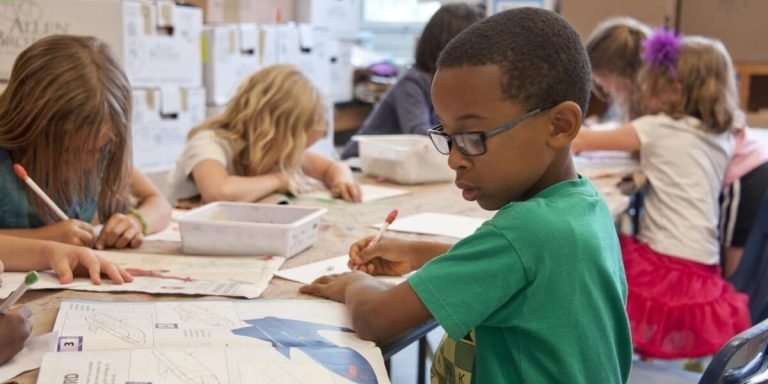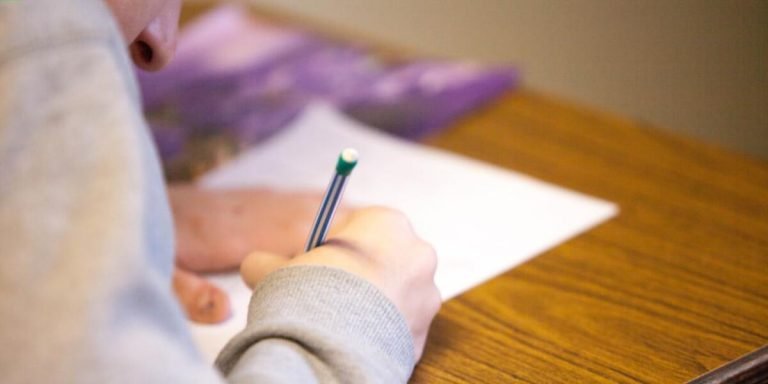Junior Highschool Transitions: Navigating the Key Change in Your Child’s Education Journey
Transitions are an integral part of growth, and one such vital transition in the realm of academics is the step up from elementary school to junior highschool. This phase marks a significant change in your child’s education journey as it brings with it new environments, new teachers, more complex subjects, added responsibilities and heightened academic demands. The shift can be overwhelming for both children and their parents alike.
Understanding what this “middle school education” entails is crucial for preparing and supporting your child through this critical period effectively. Steering effectively through this stage can set a strong foundation that could make navigating subsequent educational transitions easier on them. It helps to start by comprehending the key changes you should anticipate during these formative years; not just academically but also how they will impact social interactions, study patterns or even shifts in self-esteem amongst students around this age group.
Did you know?
Did you know that according to a study by the American Education Research Association, students undergoing transitions (like moving from elementary school to junior high) are 60% more likely to experience lower academic performance? This underscores the importance of providing robust support during this key phase in your child’s education journey.
Understanding the Junior High School Curriculum
The Junior High School curriculum is an exciting yet critical phase in a child’s education. The transition from elementary school can be daunting, as the academic rigour increases and children are expected to become more autonomous learners. Coupled with the rapid pace of technological advancements, it’s crucial for parents and educators alike to understand this evolving landscape.
In 2023, technology integration forms a pivotal part of middle school education; thus reshaping traditional teaching methods significantly. Smart boards have replaced chalkboards while tablets are fast becoming common substitutes for textbooks across several classrooms worldwide. Recognizing these trends within junior high schools helps set your child up for success by combining tech-savvy learning skills with solid foundational knowledge.
This doesn’t merely involve equipping students with tools but also harnessing them beneficially towards improving pedagogical outcomes such as engagement levels or cognitive retention rates. A well-rounded understanding of how technology aligns with core subjects – Math, Science or Social Studies amongst others at this level will empower adults to support their wards better through these transformative years.
Core Academic Subjects and Standards
Today’s educational landscape recognizes the essential role of technology in enhancing junior high school curriculum. Here’s how technology integration impacts core academic subjects and standards in middle school education:
Mathematics: With digital learning tools like math apps and websites, students are getting hands-on experience to solve equations or complex problems while having fun. It helps them create visual representations for abstract concepts with 3D modelling software.
Science: Virtual labs have made it possible to conduct experiments without physical resources—reducing cost & risk factors associated with live demonstrations whilst facilitating understanding beyond theoretical knowledge.
Language Arts: Technology gives access to an expansive library of ebooks and audiobooks allowing students read widely and diversely. Additionally, student blogging platforms promote writing skills as well interactive language learning through collaboration and feedback mechanisms online.
Social Studies/History/Geography : Digital maps allow real-time tracking on geographical explorations fostering spatial thinking among learners. History comes alive via virtual tours of world museums offering realistic impressions about past civilization – engaging young minds brilliantly!
Electives and Extracurricular Activities for Middle Schoolers
Middle school education is witnessing a shift, and it’s no longer just about academics. The juncture of junior high school provides an ideal platform for students to explore their interests beyond standard textbooks, primarily through electives and extracurricular activities.
Elective courses are those that fall outside the traditional curriculum yet hold crucial importance in shaping a student’s perspective. These classes aren’t mandatory but they allow children to delve into subjects or fields they find captivating. For instance, A child who has always been curious about computer programming can choose IT as an elective subject in junior highschool; sparking lifelong passion while contributing to their overall development.
The beauty of these elective classes lies in the fact that there isn’t any ‘right’ or ‘wrong’ choice – only opportunities waiting for exploration! It could range from visual arts, drama, music composition to robotics – every single course serves its purpose by offering unique learning experiences.
Contrary-to-common belief that grades don’t matter much here; these skills learned during elective courses often set the foundation for future career choices while developing critical thinking abilities essential today considering rapid technological advancements across sectors.
Beyond academic pursuits on this educational journey lie Extracurricular Activities. When integrated aptly within daily schedules at junior highschoools , benefits reaped immense! Whether partaking sports teams after study hours joining clubs like debate team serving community- centered non-profits running campaigns sustainability — each experience opens up avenue growth holistic manner nurturing young minds towards active responsible global citizens future!
Navigating the Social Dynamics of Junior Highschool
Navigating the social dynamics of junior high school is a challenging yet crucial period in every child’s educational journey. In 2023, digital platforms and technologies have an increasing influence on these interactions, creating new opportunities while presenting their own unique challenges.
Technology integration has vastly shaped how middle-school students connect with each other and their educators. As communication goes beyond classroom walls via various online tools such as collaborative projects on Google Classroom or group chats on education management systems, learning becomes more fluid and interactive. These virtual spaces effectively mimic traditional in-person exchanges among peers but come handier for digitally native generations who find comfort operating within this realm.
However desirable it may seem though to completely embrace technology-driven strategies in handling social aspects of middle school life, caution must be exercised at all times due to potential risks like cyberbullying or misinformation sharing that are inherent threats when engaging online. Both parents and educators need to promote responsible use paired with core values fundamental to any form of interaction—respectful decorum coupled with empathy—to foster healthy relationships virtually parallel to face-to-face engagements happening inside the physical classrooms.
Building Healthy Peer Relationships
In the realm of junior high school, peer relationships hold an enormous influence on academic performance and emotional well-being. By fostering healthy peer interaction in a technology-driven educational sphere, we can optimize learning and social development.
One crucial aspect to consider is open communication. Encourage your children to express their thoughts freely with their peers about both academics and everyday situations. In a digitally oriented education system, such discussions could take place over group chats or collaborative project platforms online.
Also significant are empathy-building activities that aid in developing understanding among students from diverse backgrounds. These could be structured as webinars where each student shares his experience or virtual meetups promoting cultural exchange while staying within the curriculum’s context.
Of course, conflict management mustn’t fall through the cracks either. Equip kids with problem-solving strategies for handling disagreements maturely — perhaps via interactive e-learning modules illustrating different scenarios they might face during junior high school life.
Last but not least is moderation at all times—monitor Internet use diligently so it remains a tool rather than becoming an addiction disrupting both studies and interpersonal ties.
By facilitating these processes amidst increasing technological integration into middle-school instruction systems; you can ensure balanced growth for learners navigating this critical stage of life whilst building robust peer connections along the way.
Coping with Bullying and Social Pressure
Bullying and social pressure are unfortunately common experiences among junior highschool students. Experiencing such pressures can be very distressing for youngsters, but coping mechanisms exist that can help them navigate this challenging time.
One key step in managing bullying is teaching kids to recognize it. It’s essential they understand not just physical bullying, but also emotional and cyberbullying. In the age of technology integration in education, middle school education has expanded beyond classroom boundaries into digital spaces where hostile behaviors may occur unnoticed by adults.
Allow open conversation about any negative encounters your child might have online or at school physically. Sharing their experiences lightens the psychological burden a child carries due to bully-induced stress.
Equipping your young scholar with self-confidence plays a significant role in combating bullies too. Encourage engagement in activities like sports, arts or even coding classes to build up their skills while bolstering-up personal confidence levels which naturally lead them feeling empowered enough to stand against bullies.
Preparing for Success Beyond Junior Highschool
In today’s evolving education landscape, preparing for success beyond junior high school necessitates a strong emphasis on technology integration. As we advance further into the 21st century, our world is becoming increasingly digital and interconnected. It’s crucial that educators equip students with tech-savvy skills to navigate this ever-changing environment.
Middle school serves as an essential transitional phase where children can cultivate their technological competence in preparation for higher levels of learning. One might even argue that middle school is the ideal platform to introduce various forms of educational technologies due to its broader curriculum range compared to elementary schools.
Not only does technology integration enhance academic performance but it also fosters critical thinking and problem-solving abilities among learners — skills highly sought after by modern employers globally. So if you’re looking at ways your child or student can progress effectively post-junior highschool, start incorporating more digitally-based activities within their pedagogical lineup now; they’ll thank you later when they see themselves thriving in the future workspace.
Developing Effective Study Habits in Middle School Education
Developing effective study habits early on is a critical component in paving the path to success beyond junior high school. In this digital age, with technology integration becoming an inherent part of middle school education, it’s time parents and educators reinvent traditional learning approaches.
Foster excellent study habits that align with today’s tech-driven educational landscape using these strategies:
1. **Encourage Structured Online Learning:** Students should be encouraged to make use of online resources like e-books and educational podcasts as supplement materials alongside their regular textbooks.
2. **Promote Interactive Tech Tools:** There are various interactive tools available nowadays which can optimize learning outcomes for students – artificial intelligence-powered tutoring apps can provide personalized feedback while virtual reality systems offer immersive learning experiences.
3. **Strengthen Problem-Solving Skills through Coding**: Starting from junior highschool itself, introducing coding exercises helps kids develop analytical thinking abilities necessary for any field they might choose later in life.
4. **Adopt Time-Management Apps**: Several apps teach kids how to prioritize tasks and manage their time better – skills that will help them perform efficiently not just acadically but also professionally when they grow up.
5. **Guide Safe Internet Use**: Navigating through vast online information requires smart filtering skills; teaching children about reliable sources will prevent misinformation ingestion aiding sensible decision-making ability over years.
Importance of Career Exploration Programs
Career exploration programs play an instrumental role in a junior highschool student’s development, particularly considering the significant shifts towards technology integration in education. They offer valuable insight into various career paths and provide students with hands-on exposure to help shape their future vocations.
In today’s rapidly evolving world, understanding diverse professions has never been more pressing. Thanks to technological advancements, even traditional jobs are adopting digital aspects which demand specific skills from tomorrow’s workforce. Hence, introducing career exploration activities during middle school education can equip students early on for such transitions.
These programs influence key areas of personal growth among youngsters, who often feel uncertain about their professional aspirations at this age.
1) **Exposure**: These initiatives introduce young minds to numerous fields they might not have access or exposure otherwise. Herein lies the first decisive step towards shaping a technologically inclined future specialist.
2) **Skill Development**: Career-specific tasks carried out under these ventures foster relevant skill sets that decades ago wouldn’t be part of early learning but are now indispensable thanks to our technologically dominated work spectrum.
3) **Confidence Building**: Engaging directly with professionals heightens self-assurance levels amongst learners as they begin picturing themselves within potential roles thereby boosting their confidence significantly.
Conclusion
Navigating the whirlwinds of junior highschool transition is indeed a critical journey for both you and your child. Every bump, every turn may seem daunting but remember, it’s not just about getting through; it’s about thriving in this stage that sets up the trajectory for future learning experiences.
As we wrap up our exploration on junior high transitions, don’t forget to check out other resources available throughout our website. Whether you are an educator seeking advice or a parent needing support with more topics related to childhood education, we’ve got your back! Stay curious and continue embarking on these educational journeys together with us.







